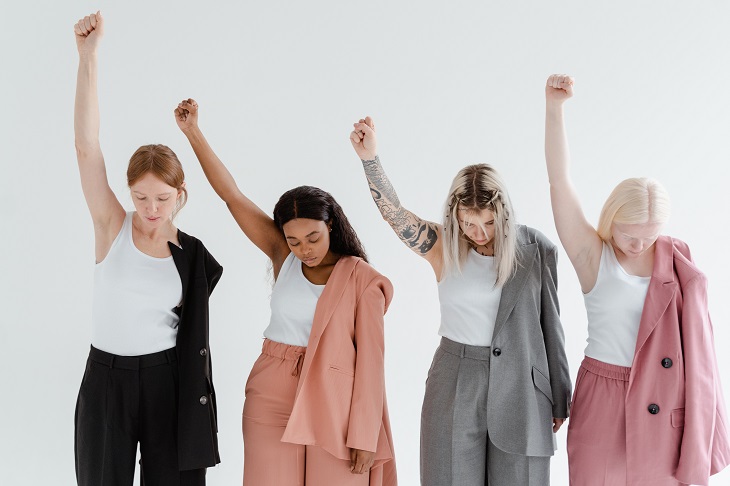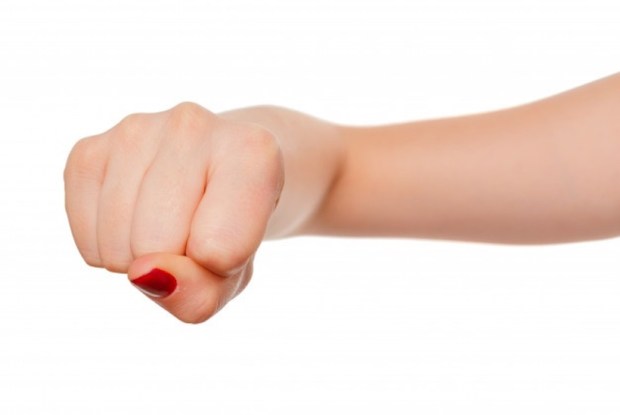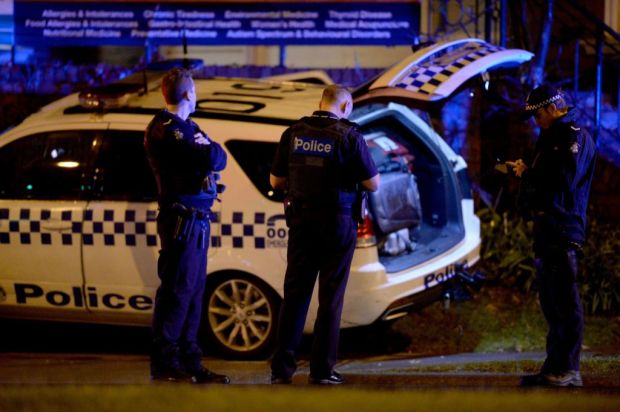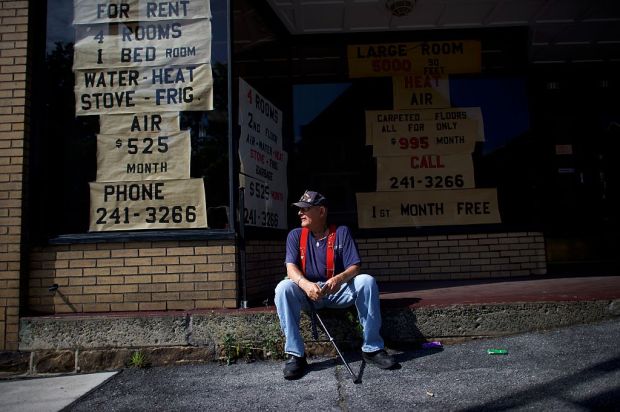You may recall the campaign running on national television a few years ago. The ads were part of the Australian government’s campaign designed ‘to help break the cycle of violence against women and their children’.
It suggested that all of the perpetrators of domestic violence were strictly male. For example, the Albanese Labor government is presently funding a range of new initiatives through this budget to help deliver the National Plan to End Violence against Women and Children 2022-32.
But what about domestic violence against men?
I have no intention of minimising the problem of domestic violence against women and children. One must speak out loud and clear about violence against anyone regardless of age, gender, and sexual orientation.
However, it is a myth that domestic violence is all about men hurting women in heterosexual relationships. Domestic violence is also a ‘silent epidemic’ in lesbian relationships.
As the studies of lesbian violence demonstrate, women are capable of being as violent as men in intimate relationships. Violence among same-sex couples is apparently two to three times more common than among married heterosexual couples.
For example, about a decade ago the US Centers for Disease Control and Prevention’s National Intimate Partner and Sexual Violence Survey reported on the lifetime prevalence of rape, physical violence, or stalking by an intimate partner, focusing for the first time on victimisation by sexual orientation.
It found a victimisation prevalence of 43.8 per cent for lesbians, making it the second most affected group after bisexual women (61.1 per cent), ahead of bisexual men (37.3 per cent), heterosexual women (35 per cent), heterosexual men (29 per cent) and homosexual men (26 per cent).
A new study from Rutgers University has found a significant increase in domestic violence in lesbian relationships. The study is entitled, Sociodemographic characteristics, depressive symptoms, and increased frequency of intimate partner violence among LGBTQ people in the United States during the COVID-19 pandemic. It appears in the April 2023 (Volume 35, Issue 2) of the Journal of Gay & Lesbian Social Services.
The above study used a survey of 1,090 LGBTQ+ individuals. It found that bisexual women, followed by lesbians, are the most likely to suffer from all forms of intimate partner abuse. The same study also found that, in cases of severe violence, the numbers are 49 per cent of bisexual women, 29.4 per cent of lesbian women, and 16.4 per cent of homosexual men compared to 23.6 per cent of heterosexual women and 13.9 per cent of heterosexual men.
That violence comes out more frequently in lesbian relationships both as resistance and as aggression should put aside our preconceptions of gender socialisation and roles.
Erin Pizzey set up the first refuge for battered women, in 1971. Her own experience is that women are just as capable of intimate partner abuse, in both the physical and emotional sense, as men. When she opened her refuge for battered women, 62 of the first 100 women to come through the door were as abusive as the men they had left. And when the feminists started demonizing fathers in the early 1970s, she felt morally obliged to state:
‘Women and men are both capable of extraordinary cruelty. … We must stop demonising men and start healing the rift that feminism has created between men and women. This insidious and manipulative philosophy that women are always victims and men always oppressors can only continue this unspeakable cycle of violence. And it’s our children who will suffer.’
Pizzey is part of a growing number of brave experts and scholars trying to set the record straight. Professor Linda Mills, the Ellen Goldberg Professor at New York University, said:
‘Years of research, which mainstream feminism has glossed over or ignored, shows that when it comes to intimate abuse, women are far from powerless and seldom, if ever, just victims. Women are not merely passive prisoners of violent intimate dynamics. Like men, women are frequently aggressive in intimate settings and therefore may be more accurately referred to as “women in abusive relationships” … The studies show not only that women stay in abusive relationships but also that they are intimately engaged in and part of the dynamic of abuse.’
The official figures, however, grossly underestimate the number of female perpetrators of domestic violence. Male victims are reluctant to disclose when they have been abused by women. Culturally, it is still difficult for men to bring these incidents to the attention of the authorities. It does not fit the official narrative.
Frequently men do not conceptualise the physical violence they sustain from their female partners as a crime. As noted by one worker at the charity Abused Men in Scotland (AMIS):
‘The gender role men are given in society means they find it hard to understand and recognise what is happening to them and when they do it is very difficult for them to talk about it. Regularly they begin with: “I am not an abused man” but then go on to tell the most horrendous stories of domestic abuse. Once men go into that downward spiral of control they are robbed of everything – their home, their job, their self-determination.’
Elizabeth Bates, a psychology professor at the Cumbria University (UK), explains that ‘there are a lot of men who have experienced domestic violence and don’t even report it and often don’t tell anybody’.
According to a senior research fellow at the University of South Wales (USW), male victims of domestic violence ‘fear appearing unmanly … and a failure to live up to masculine ideals’. This was the experience of the abused men she has interviewed, ‘who felt that they needed help to get to the root of these feelings’.
Due to the prevailing narrative, men who sustain intimate partner abuse face numerous obstacles. They struggle to locate anti-DV services to assist them. Help lines or shelters are often targeted towards female victims only. The male victim suffers from a complete lack of support.
There is even the cruel assumption that every male victim is actually the perpetrator. To test the availability of support services to these victims of domestic violence, a Melbourne-based psychiatrist rang the ‘Men’s Referral Service’. This is how he reported his experience:
‘I rang them one two occasions in relation to male victims. Both times I was told that if I had dug deeper I would have discovered that the men were the perpetrators.’
The Australian media and government also often frame child abuse as a ‘fathers’ problem’. However, one the greatest risk factors in child abuse and neglect, found by virtually every such investigations, is that of children living in a female single-parent household.
Indeed, child abuse overwhelmingly occurs at households from which the biological father is absent. According to the US Department of Health and Human Services:
‘On average, fathers who live in a married household with their children are better able to create a family environment that is more conducive to the safety and necessary care of their children. Consequently, children who live with their biological father in a married household are significantly less likely to be physically abused, sexually abused, or neglected than children who do not live with their married biological parents.’
To conclude, it is a sexist myth that domestic violence is all about men hurting women in heterosexual relationships. It’s not. Women dish out a lot of violence too, including against kids.
Of course, if our politicians were truly concerned about the scourge of domestic violence in our society, at least they would acknowledge these important factors. For it is important to understand that domestic violence is not just a ‘male problem’ and that women are sometimes part of the problem as well.
Augusto Zimmermann is Professor and Head of Law at Sheridan Institute of Higher Education. He is also a former commissioner with the Law Reform Commission of Western Australia and the lead author of “Foundations of the Australian Legal System: History, Theory and Practice” (LexisNexis, 2023).
Got something to add? Join the discussion and comment below.
Get 10 issues for just $10
Subscribe to The Spectator Australia today for the next 10 magazine issues, plus full online access, for just $10.


























Comments
Don't miss out
Join the conversation with other Spectator Australia readers. Subscribe to leave a comment.
SUBSCRIBEAlready a subscriber? Log in